Private First Class Peter Radford Davis
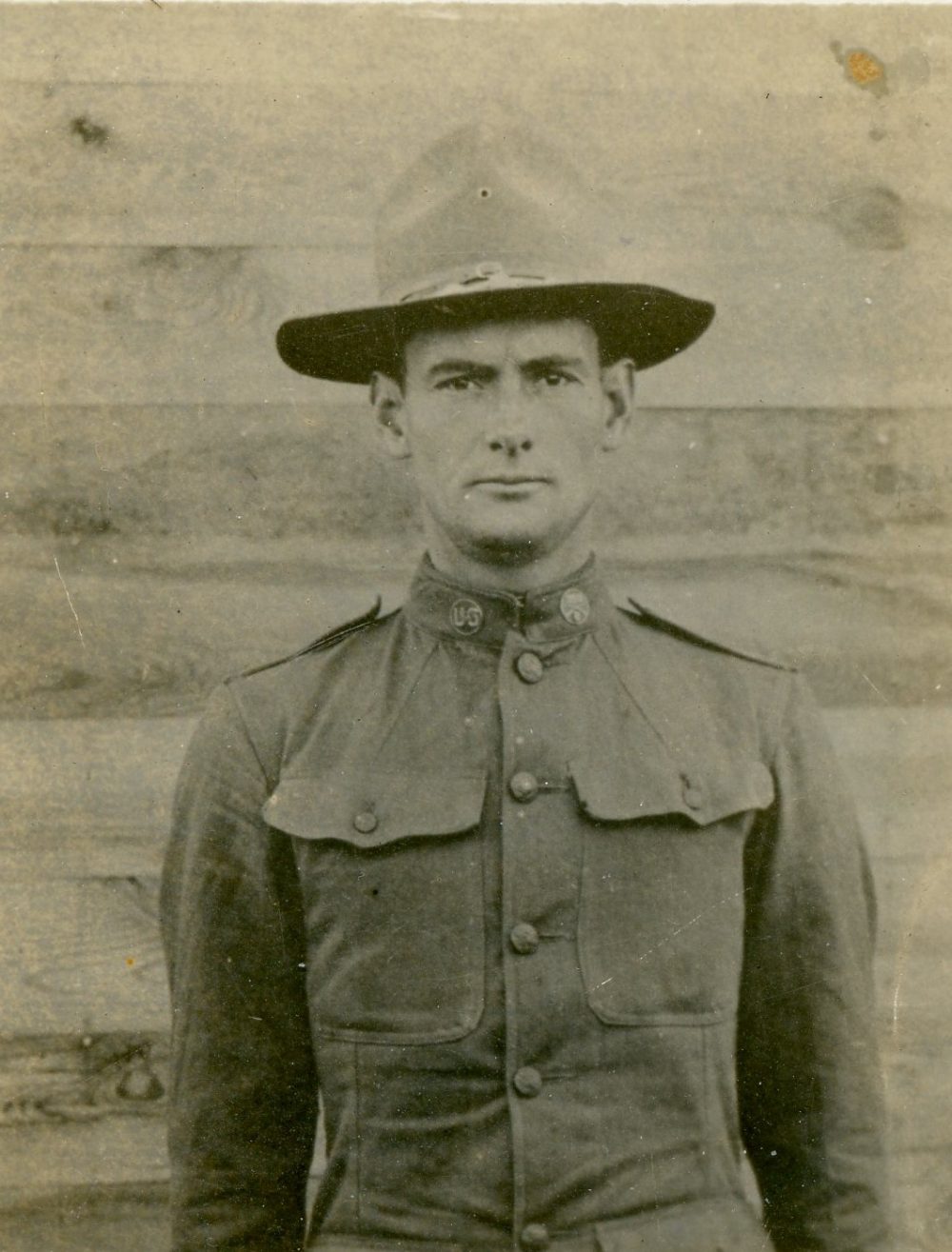
- Unit: 90th Division, 180th Regiment, 359th Infantry Brigade, 345th Machine Gun Battalion, Company B
- Service Number: 2224558
- Date of Birth: October 2, 1892
- Entered the Military: September 21, 1917
- Date of Death: October 20, 1918
- Hometown: Parker County, Texas
- Place of Death: Blercourt, France
- Cemetery: Tablets of the Missing. Meuse-Argonne American Cemetery, Romagne-Sous-Montfaucon, France
St. John's Episcopal School
2017-2018
Early Life
Peter Radford Davis was born October 2, 1892, on his parents’ farm in northeast Parker County, Texas, between the communities of Veal Station and Sabathney. His parents were James Columbus and Dicey Clark Davis, and Peter was the baby of the family. His oldest sister, Eliza, died as an infant. She was the first of the Davis family buried at the family cemetery. As children, Peter and his surviving sister and brothers enjoyed exploring the rolling, wooded hills along Ash Creek and Mill Branch.
After their mother died in 1905, Peter and his older siblings took on more work in running the family farm. His older sister and brothers eventually started their own families, but they stayed close to the family farm. Peter was a kind uncle and doted on his niece, Berta Mae.
Handsome with dark eyes and hair and broad shoulders, Peter stood over six feet tall. Many years of hard work on the farm helped him to develop a strong frame. Peter courted a young woman who lived on a nearby farm. At age 25, he was ready to settle down and start a family of his own.
But, the United States entered World War in 1917, and the nation needed young men to fight. Peter, like almost one million other Texans, registered for the selective service. Peter signed his draft papers on June 5, 1917.
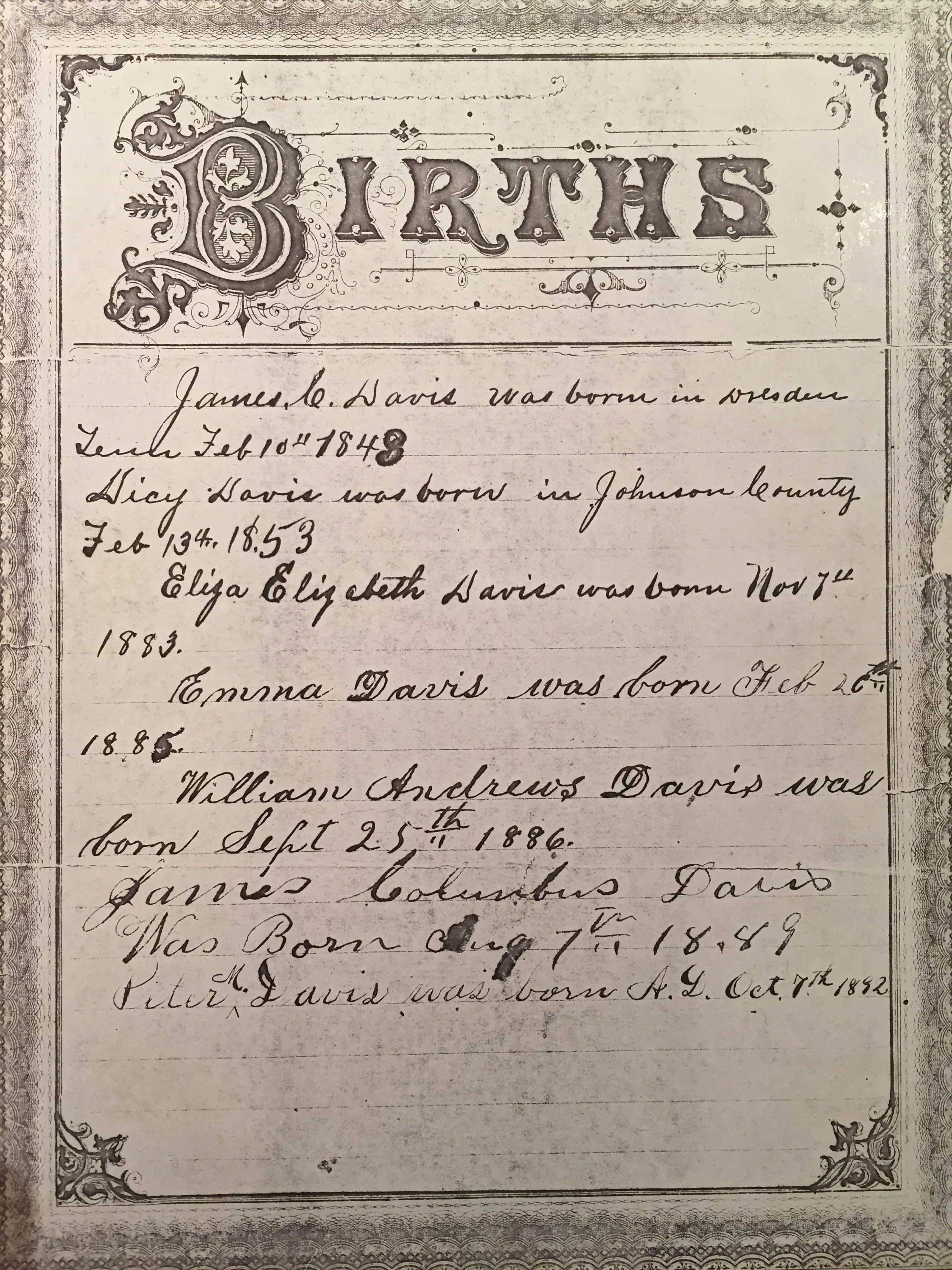


Military Experience
Camp Travis, Fort Sam Houston, San Antonio, Texas
In September 1917, Davis reported to basic training at Camp Travis, Texas, as part of the 90th Division. Most of the soldiers in the division came from Texas and Oklahoma. The division earned the nickname the “Tough Ombres.” Davis was part of the “Texas Brigade.” Davis wrote many letters home and reported that He spent a good bit of time “doing some pretty good shooting” out on the range. The Camp Travis range had a reputation for being one of the finest in the United States. He also learned how to use a bayonet and hand grenades in trench warfare.
Close combat and closer living quarters led to outbreaks of disease. An outbreak of the measles occurred in December, and the base was under quarantine for several weeks. Other soldiers became ill and died from pneumonia. Davis was thoughtful of others and wrote about visiting his sick friends who were in the hospital. One Parker County friend, Ben Barber, died of pneumonia during this time.
Davis wrote home often. He described a deep snow that blanketed San Antonio in early 1918. Snowfall like this was very unusual in south Texas. Many young men from Parker County were still coming to Camp Travis to begin basic training in early 1918.
Journey to War
In June 1918, Davis and the “Tough Ombres” began deploying overseas. His battalion shipped out for war on June 18 from the Port of New York on the RMS Kinfauns Castle. To avoid contact with German U-boats as they crossed the North Atlantic, the Navy camouflaged ships with dazzle stripes. These black and white zig-zag stripes helped the ship to blend in with the waves of the open ocean. Like Davis, most Texans on board had never seen the ocean.
The experience of sailing across was difficult. Quarters below deck were hot and cramped, and many men suffered from seasickness. They landed at Liverpool, England, on July 3 and soon sailed for the coast of France. Next, they boarded a train to the western front to begin training for life in the trenches.
In the Trenches
In August the 90th Division began service in the trenches in eastern France. On September 12, the Allied Expeditionary Forces began a major drive against the German front lines. A field order praised the 90th Division for the “glorious fashion” of their first real combat experience in the area known as Saint Mihiel.
By September 24 the 359th Infantry Brigade moved north to take part in the assault on the village of Prény. The Division History explained that the fighting was difficult. The infantry was unable to keep up pace with the rapid fire of the machine guns. This allowed the “German machine gunners to crawl out of their pill-boxes . . . and set up their guns to catch the advancing infantry.” In an October letter home, Davis noted that during this time “thay weare shooting the little 3 inch pretty fast and it made some nosie (sic).”
Fighting continued into afternoon and evening of September 24. The Germans countered the attack by launching canisters of gas into American lines. The gas, heavier than the surrounding air, settled in the low lying trenches. The next morning Peter and his company evacuated to a new position because the gas was unbearable. Despite the gas exposure, Davis and his company continued to fight on for two more weeks.
When the “Tough Ombres” were pulled off the line on October 10, they retreated to the area near Toul. The Division History states that the men “eagerly looked forward to an opportunity to rest, wash, clean up, and obtain badly needed clothes and equipment.” However, rest and relaxation were not part of their orders. Army commanders sensed that the enemy was weakening. The division went to a new area of battle, west of Verdun.
In the same letter, mailed on October 16, Davis also wrote about his experiences “going over the top.” This means that he had to leave the relative safety of the trench and try to cross No-Man’s Land. His goal was to attack heavily fortified German machine gun positions on the other side.
He wrote to his brother Jim, “I weant through that drive all rite that we had in Sep. . . . I guess that you know it was pretty bad but I was as cool as I ever was seem like I dident dread everything at all thay are driving all along the lines and I hope the war will (not) last much longer (sic).”
Four days later, Davis died. He never left the staging area in Blercourt, west of Verdun. Military records state that he died in a tent on October 20, 1918, of “heart failure.” It is possible that his health failed because of the effects of the gas attack in September. Family stories passed down to his niece also corroborate this version of events.
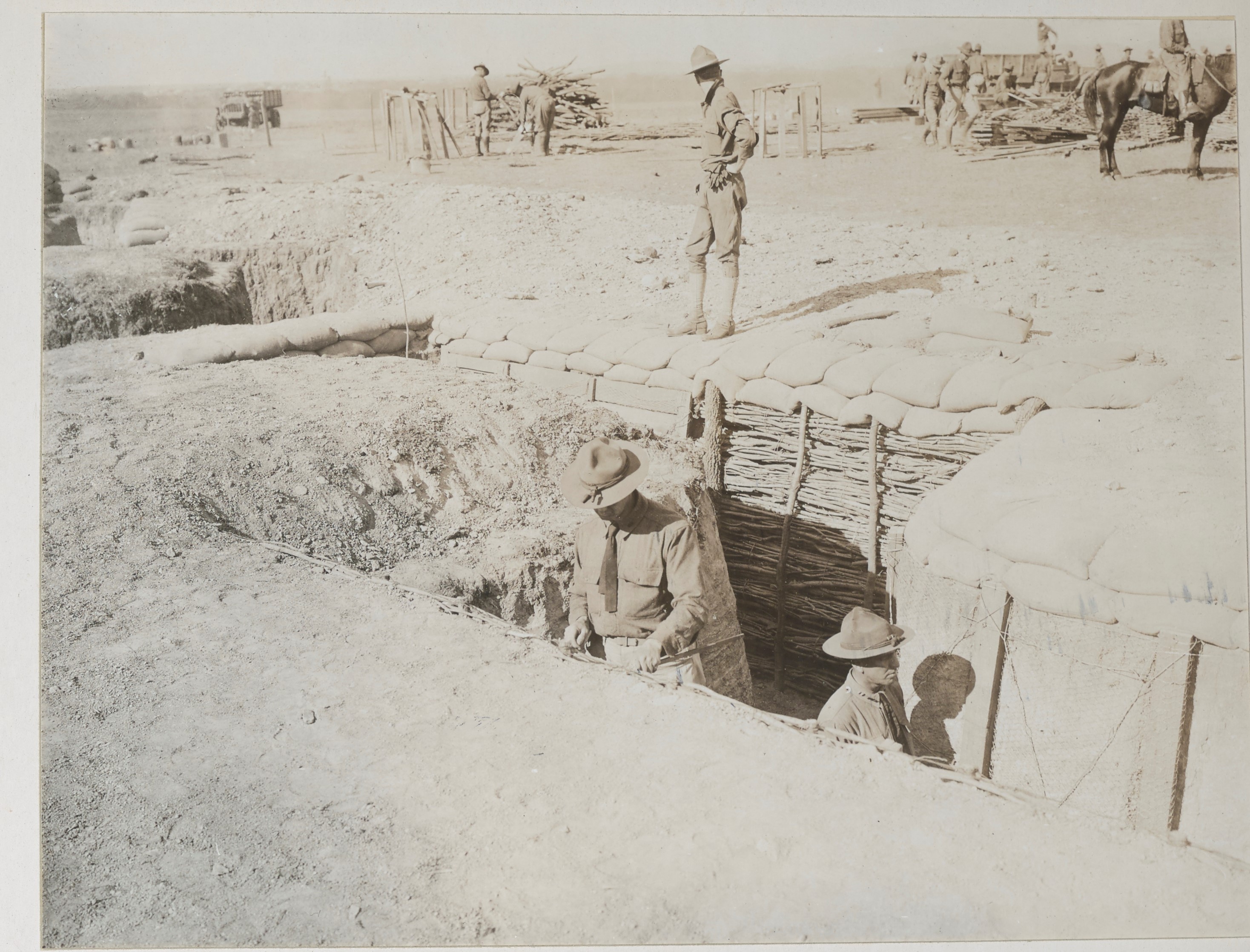
Eulogy
Private First Class Peter Radford Davis was buried on the right side of a hill between the towns of Blercourt and Jouy-en-Argonne, on October 21. The official Unit History does not record his death among those of the 90th Division. On the day that Davis died, the remainder of his unit left Blercourt to go to the front as part of the Meuse-Argonne Offensive. Perhaps in the confusion of going to battle, his name was somehow left off the list of deaths.
After the war, the U.S. government created the Gold Star Mother program. This program paid for for mothers of the fallen to visit their children’s graves in Europe. Davis’ father was too old to travel, and he wrote to the government many times asking permission for another family member to take his place. He wanted someone to look upon the grave of his son. The government was unable to honor his request.
Though Davis’ parents and siblings have passed, Davis’ memory is not missing from his family. Each summer, the descendants of the Davis and Clark families gather on a Sunday afternoon in June to tend to the graves at the family cemetery on the old homeplace. Davis’ parents and siblings rest there, and family members share stories across the generations.
Davis’ legacy lives on in memories handed down to nieces and nephews he never met. A poster honoring his service still hangs in the office of a great-nephew after all of these years. And, another great-nephew bears his name and remembers his World War I service each year on July 4.
Finally, Private First Class Peter Radford Davis is honored on the Tablets of the Missing, in the shade of the cool stone arcade at Meuse-Argonne American Cemetery. Thousands of people have passed by and looked upon his name, remembering his sacrifice and service so many years ago.
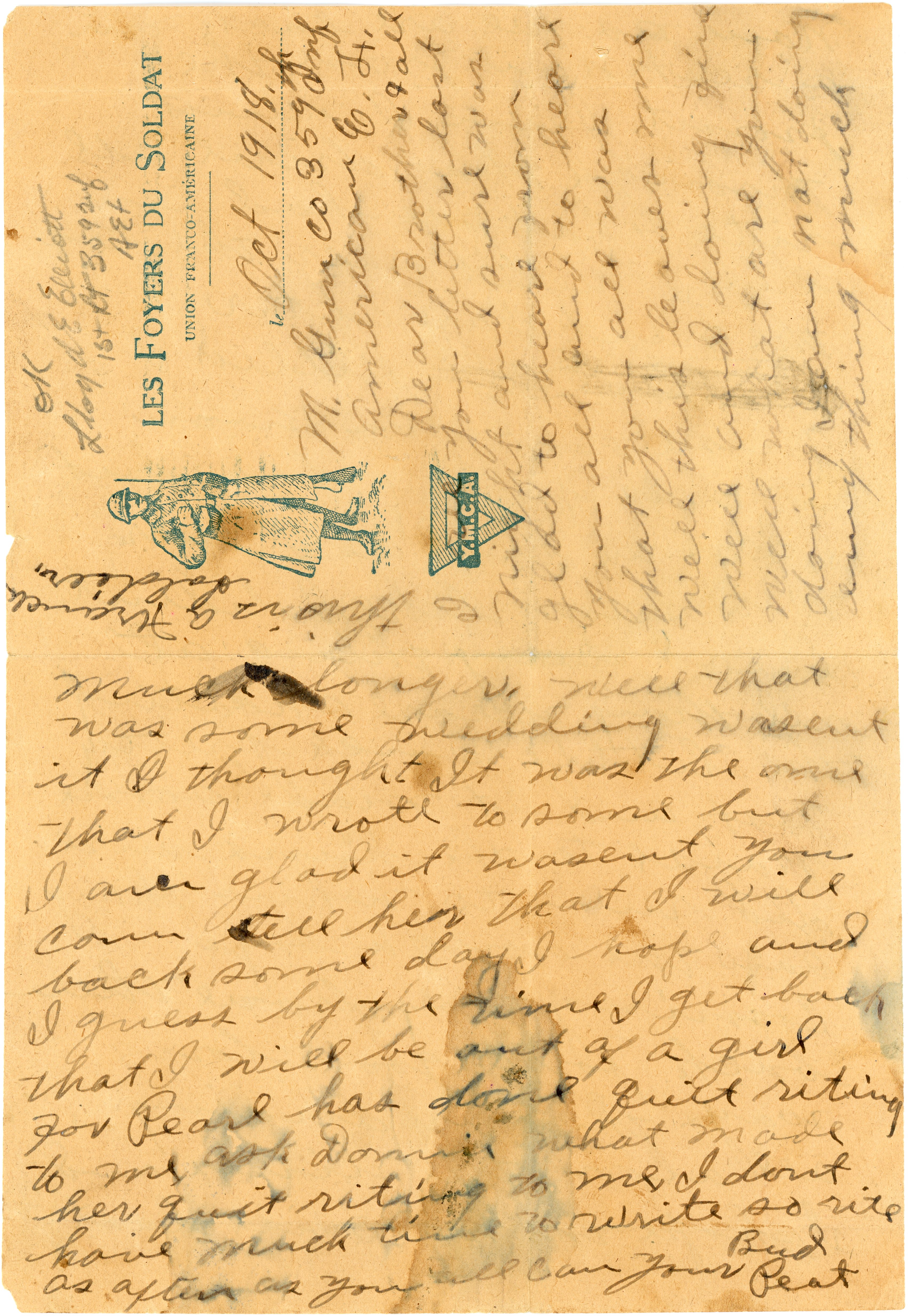
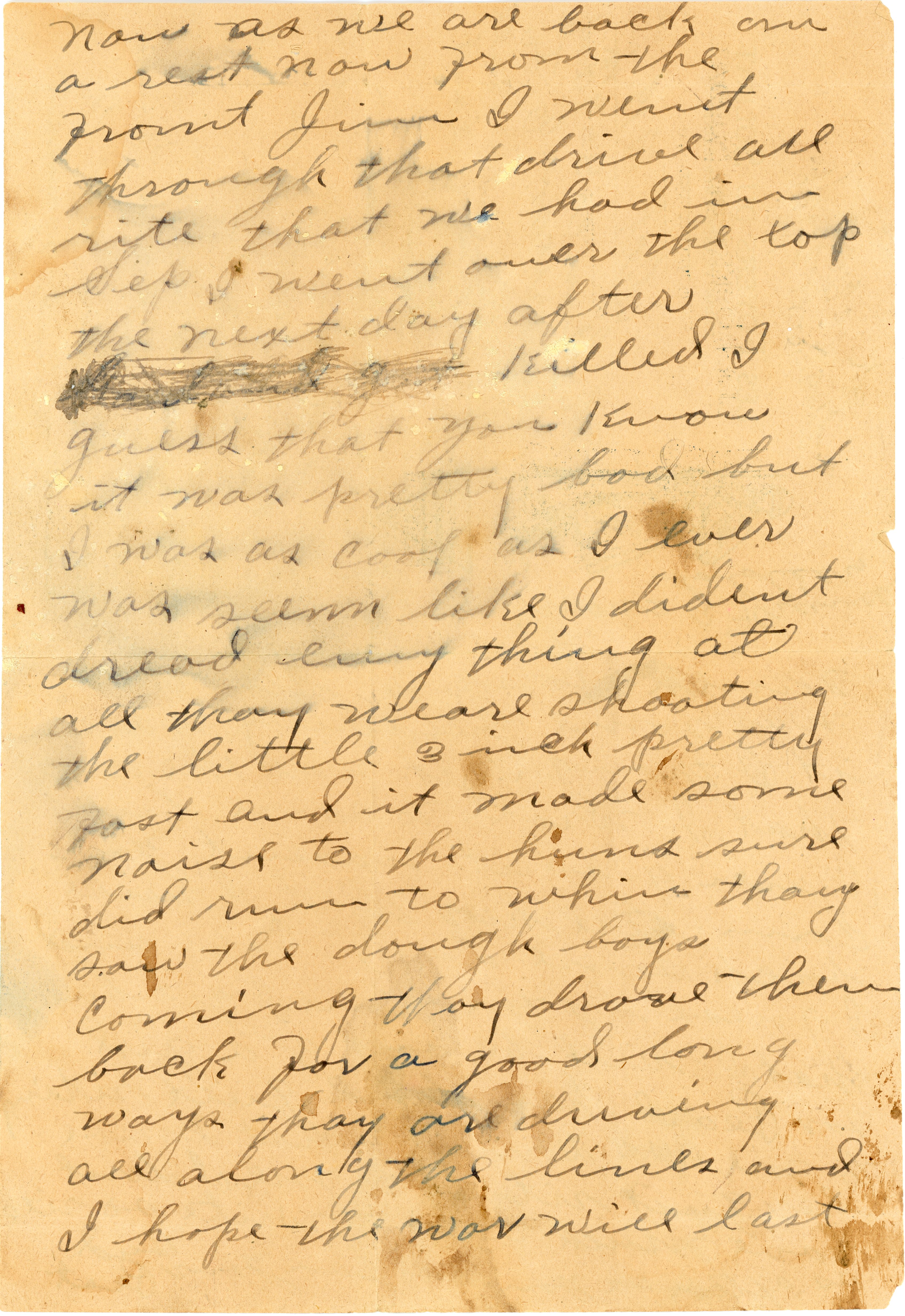
Reflection
Bibliography
2nd Division; Records of the American Expeditionary Forces (World War I), Records of Combat Divisions, 1913-1939, Record Group 120 (Boxes 51-61); National Archives at College Park, College Park, MD.
Benjamin Franklin Butler. Texas, Death Certificates, 1903-1982. Digital Images. ancestry.com.
Davis Family Bible. 1892. Photograph. Courtesy Peter R. Davis, Jr.
Davis, Jr., Peter Radford. Personal interview by the author. March 2, 2018.
Gold Star Mothers: Pilgrimage of Remembrance. Produced by Alison Davis Wood. 2003. Urbana: WILL-TV, 2003. DVD.
Hewett, Connie, and Vernie Hewett. Personal interview by the author. June 2018.
Holmes, M.D., Frederick. “Heart Disease in the First World War.” Medicine in the First World War, The University of Kansas Medical Center. Last modified July 26, 2018. Accessed July 29, 2018. www.kumc.edu/wwi/index-of-essays/heart-disease.html.
Hymans, H. I. A Short History and Photographic Record of the 359th Infantry Texas Brigade. Fannin County Historical Society. San Antonio: San Antonio Printing, 1918. www.txfannin.org/booksonline.php?book=Ifty.
Insignia of the 90th Infantry Division. Photograph. U.S. Holocaust Memorial Museum. Accessed June 23, 2018. www.ushmm.org/wlc/en/media_ph.php?ModuleId=10006141&MediaId=3810.
J.C. “Broadhorn” Davis Home Circa 1910. Photograph. Courtesy of Connie and Vernie Hewett.
Johns, E. B. Camp Travis and Its Part in the World War. New York: Wyncoop Hallenbeck Crawford, 1919. www.archive.org/stream/camptravisitspar00camprich/camptravisitspar00camprich_djvu.txt.
Laskin, David. The Long Way Home: An American Journey from Ellis Island to the Great War. New York: Harper, 2011.
Peter Davis to Mr. W. A. Davis. 21 July 1918. Courtesy of Connie and Vernie Hewitt.
Peter Davis to Mr. W. A. Davis. 21 September 1918. Courtesy of Connie and Vernie Hewitt.
Peter Davis to Mr. J. C. Davis, Jr. and brothers. 18 April 1918. Courtesy of Peter Radford Davis, Jr.
Peter Davis to Mr. J. C. Davis, Jr. and brothers. October 1918. Courtesy of Peter Radford Davis, Jr.
Peter Davis to Mrs. Eula Davis and brothers. 12 January 1918. Courtesy of Peter Radford Davis, Jr.
Peter R. Davis. U.S., Army Transport Service, Passenger Lists, 1910-1930. Digital Images. ancestry.com.
Peter R. Davis. U.S., World War I Draft Registration Cards, 1917-1918. Digital Images. ancestry.com.
Peter R. Davis, Jr. Commemorating PFC Peter R. Davis. July 4, 2018. Photograph. Courtesy Peter R. Davis, Jr.
Peter Radford Davis. World War I Burial Case File and VA Master Index Card; Correspondence, Reports, Telegrams, Applications and Other Papers relating to Burials of Service Personnel, Records of the Quartermaster General’s Office, 1915-1935, Record Group 92; National Archives and Records Administration – St. Louis.
Peter Radford Davis Deceased Veterans Claims (XC) File; Records of the Department of Veterans Affairs, 1773-2007, Record Group 15; National Archives and Records Administration – St. Louis.
Peter Radford Davis. Texas, Death Certificates, 1903-1982. Digital Images. ancestry.com.
Rowden, Dicey Clark. Personal interview by the author. June 22, 2018.
Steen, Ralph W. “World War I.” Handbook of Texas Online, Texas State Historical Association. Last modified August 3, 2017. Accessed June 21, 2018, www.tshaonline.org/handbook/online/articles/qdw01.
Stewart, Frankie. Interview by Jo Ann Barnhart, Davis Melvin, and Abandoned Cemetery Association of Parker County. Sabathney, TX. June 17, 2018.
Texas. Parker County. 1900 U.S. Census. Digital Images. ancestry.com.
Texas. Parker County. 1910 U.S. Census. Digital Images. ancestry.com.
Trench Warfare – Fort Sam Houston, Texas. Fixing for practice work. Photograph. 1918. National Archives and Records Administration (111-SC-10781). Image.
United States Army. 131st Field Artillery (2nd Texas National Guard), 131st. Souvenir Edition of The Trail Log. May 1, 1919. Texas Digital Archive. Accessed June 23, 2018. tsl.access.preservica.com/uncategorized/digitalFile_117d8666-c772-4a07-8bbf-df407b10cd60/.
War Diaries, 90th Division; Records of the American Expeditionary Forces (World War I), Record Group 120 (Boxes 2941-2942); National Archives at College Park, College Park, MD.
World War for Liberty Poster With Photo of PFC Peter R. Davis. 2018. Photograph. Courtesy of Connie and Vernie Hewett.
Wythe, Major George. A History of the 90th Division. 90th Division Association: 1920. University of Michigan Library. archive.org/details/ahistorythdivis00assogoog.

